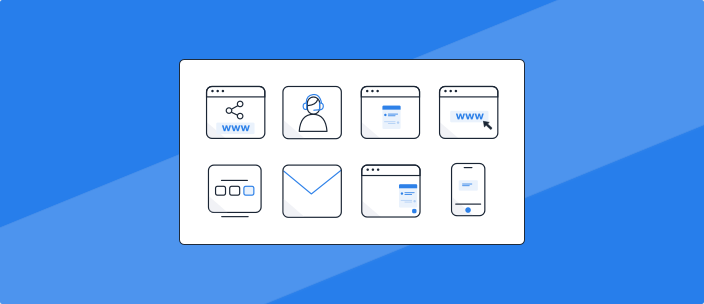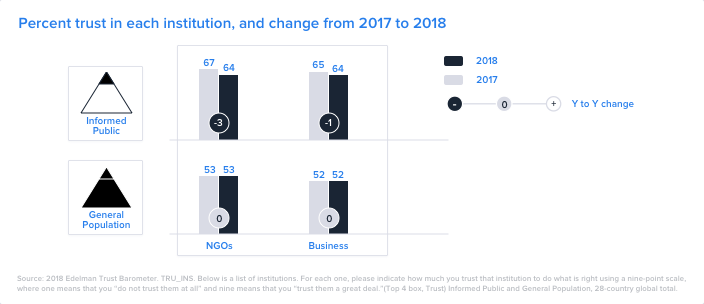Customer Centricity
Customer centricity is a buzzword which is becoming increasingly prominent both from a customer experience point of view as well as a general marketing viewpoint. It is a term that refers to a change in focus from ‘what the business wants’ to ‘what the customer wants’. This means that as a business, you should be putting yourself in your customers’ shoes before you consider the potential benefits or implications for your business.
This isn’t a new phenomenon, but it has recently begun gathering further momentum due to an increasing lack of faith that businesses do not serve and haven’t been serving the best interests of their customers. This has also been compounded by increasing global competition where businesses now have to work harder to make sure that they are providing value for money.
Although the idea of customer centricity isn’t a particularly new one, it is a term that has been reinvigorated and one that has incredible importance. As a business you must – in your marketing strategy – make sure that you put your customers first. You must make sure you are giving them the value, quality, knowledge they are looking for. Always remember that without customers, you have no business.
Chatbots & Self-service
It seems that you cannot read a customer experience article in 2018 without the mention of chatbots and/or self-service. They have grown both in prominence and stature and if you, and your business are not at least adding them to your consideration set then you probably should. That’s not to say that every business should have one, but they should be considered, even if it’s just to say you want to go down another route like a live webchat solution.
Chatbots can be an incredibly powerful self-service tool for both business and customers. They give your customers the ability to get an answer to their question quickly and without the need to tie up costly human staff members.
Although there are time savings, the reason that a chatbot isn’t always relevant to every business comes back to the first buzzword discussed, customer centricity. What are the types of questions and interactions your customers are wanting? If it’s a single, simple question with a fixed answer then a chatbot may be perfect, but if they are asking more complex, personalized questions where advice or guidance is needed, then a chatbot may not be right.
Just because it’s new and shiny, it doesn’t mean you have to implement it. You have to be considered, and make sure that value is being added to your customers’ experience.

Omnichannel/Multi-channel Communications
Big words. Important words. If you don’t yet understand what omnichannel means, don’t worry. It’ll be explained now.
A multi-channel/omnichannel customer experience looks at the streamlining of a company’s communication channels. The means that no matter which medium a customer chooses to talk to the company, they get a consistent style/tone of messaging, appropriate answers and an efficient response.
This consistency of your communications and messaging should be taken as seriously as you take your branding. It forms an integral part of your brand identity. Your brand is how your customers will come to associate you. You need to make sure that every communication with your company helps to shine it in the most positive light possible. First impressions really do count. If you are going to offer your customers a huge array of channels to communicate with you through. It is really important that you make sure that you have an efficient and robust plan for answering those queries. That may even include a chatbot . . .
Personalisation
Your customers are not just numbers, they are people. You need to relate to them and talk with them not at them. Something as simple as using their name, not just calling them ‘valued customer’.
Personalisation is arguably one of the most powerful customer experience tactics. If you know your customers and you are able to talk to them like people, and solve their individual issues, you are well on the way to earning loyalty.
Some great examples of incredible customer experience success stories and brands that are using personalisation effectively are highlighted in the Experience This! Podcast. I cannot rate it highly enough and I think you’ll find some great real-world examples of how you can add more personalisation into your brand.
User Generated Content
User Generated Content (UGC) is becoming more and more important to brands and customers alike. Why? Trust. Trust in businesses is extremely low right now. Edelman’s 2018 Barometer of Trust Report concluded that trust in businesses is as low as 52% Globally.
 Trust is heard earned, and easily lost. This is even more true for businesses. In order to help build trust in your business and products you need to leverage your customers as a trust source. This could take the form of reviews, testimonials and/or case studies.
Trust is heard earned, and easily lost. This is even more true for businesses. In order to help build trust in your business and products you need to leverage your customers as a trust source. This could take the form of reviews, testimonials and/or case studies.
This improved trust will help improve your conversion rates. L2’s Instagram Intelligence Report, UGC has given fashion brands a 6.4% boost in conversions and even a 1.6% increase for consumer electronics brands.
The power of trust and UGC is only on the up right now. If you want to provide the best customer experience, and an experience that converts to sales, get your customers to help create your content.



